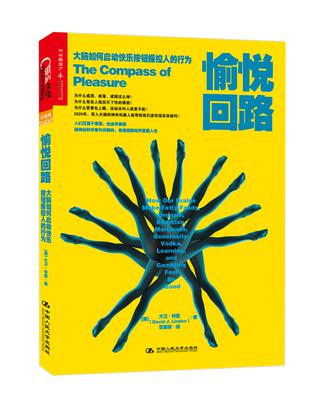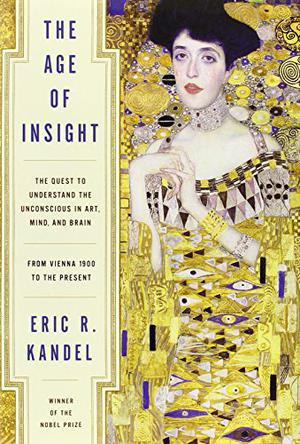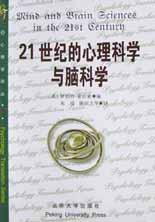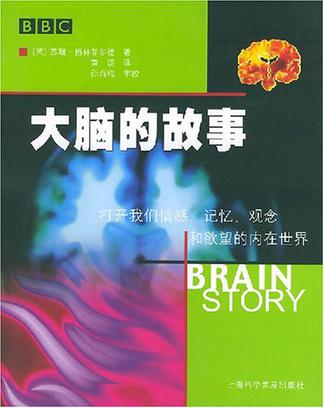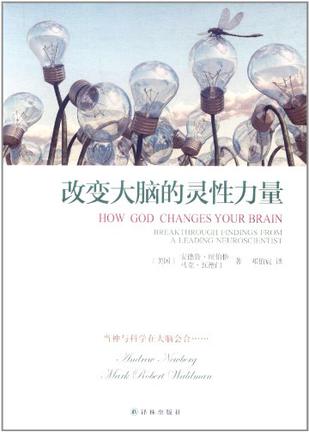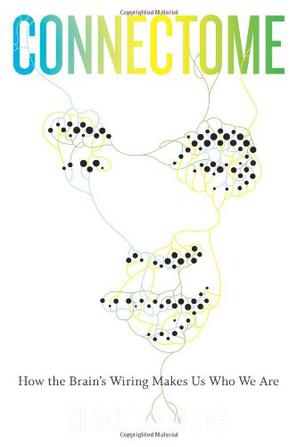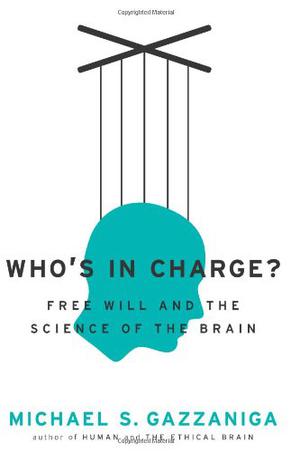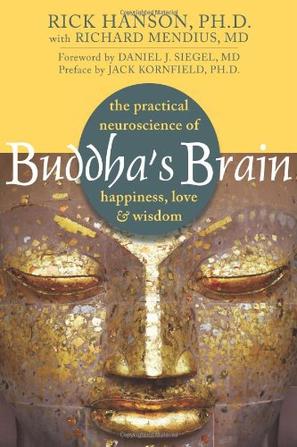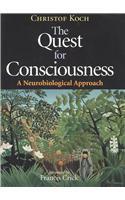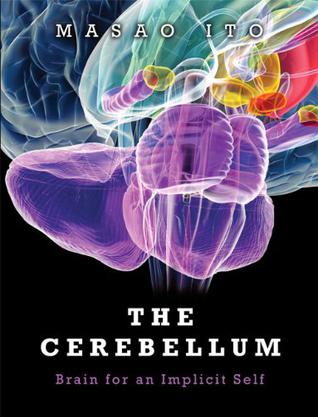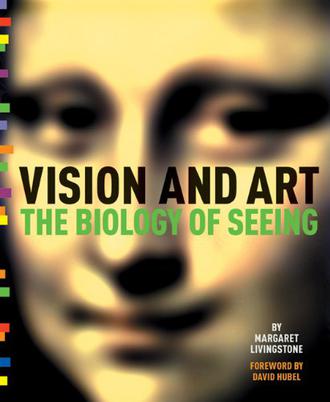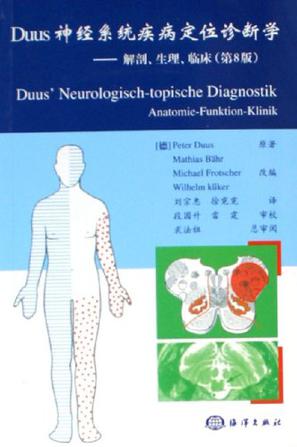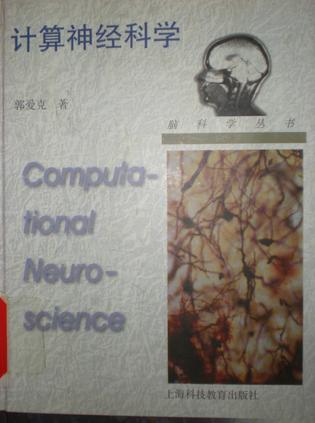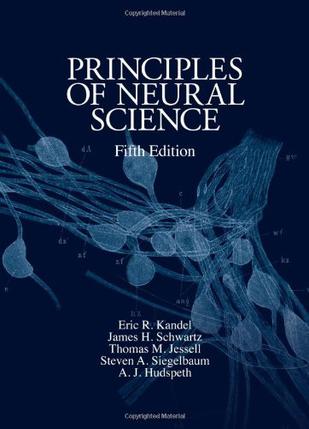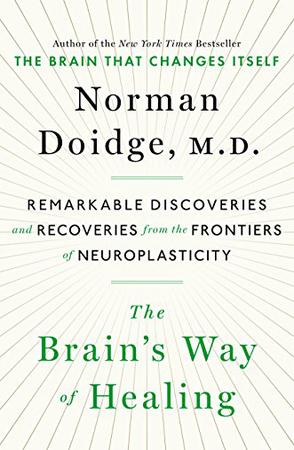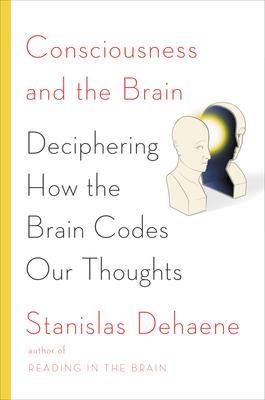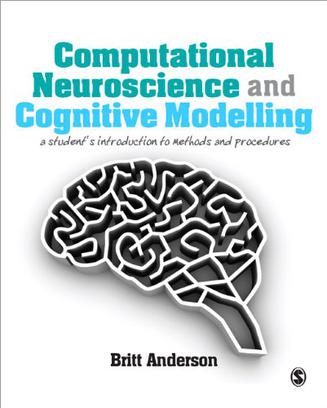欢迎来到相识电子书!
标签:神经科学
-
神经科学中的数学
《神经科学中的数学(导读版)》通过Matlab编程语言在众多模拟中的应用来介绍计算方法。这些程序为新的课程和研究提供有益的跳板。作者从介绍微分方程和线性代数在细胞、亚细胞和突起模型的应用开始,然后介绍概率论在突触传递和单细胞噪声中的应用,最后将信号处理理论应用于系统神经科学中。 神经科学依赖众多数学工具表达已有的理论、分析数据并提出新的实验。本书采用一系列扎实的计算模型将该领域最令人瞩目的工具由浅入深地介绍给读者。旨在为神经科学专业的本科生和研究生,以及对神经科学感兴趣的数学、物理和工程背景的学生提供一本教科书,亦可为进行神经科学相关研究的工作者提供有用的参考。 -
愉悦回路
我们为什么会感到快乐?为什么戒酒、戒毒、戒赌这么难?为什么有些人抵抗不了性的诱惑?为什么慈善也上瘾,运动会叫人欲罢不能? 2020年,穿入大脑的纳米机器人能带给我们虚拟现实体验吗?高科技的指数增长能帮助人更快地研制出戒断成瘾的药物吗? 人们沉溺于罪恶,也追寻美德。脑神经科学家为你解析,愉悦回路如何重塑人生。 从可卡因到大麻、从冥想到自慰、从红酒到牛排,林登博士以超有趣的方式科学地解读善与恶,以及人类如何从日常的饮食、学习、娱乐、运动中寻求快乐。 -
预见力
《预见力》:企业的未来具有可预见性和可推测性。那么如何才能准确预见企业未来呢?企业究竟该怎么管理?如何在竞争异常激烈的商战中获得先机,企业战略如何规划?下一步该怎么走?信息时代,你慢一秒,就有可能意味着失去赢得先机的机会,还有可能让一个正在成长的企业关门大吉。头脑风暴在企业发展中的重要性如何?又该怎样运用好头脑风暴?作为信息社会和高科技时代的结合,现代企业如何运用电脑系统来帮助企业运营和获取信息呢?这些问题都是很多老板和职业经理人头疼的问题,而本书正是对这些问题的解答和探讨。 《预见力》一书继承了畅销书《摇摆》和《我们如何决定》的传统,探讨了大脑作为一台预测机器背后的科学知识,并解释了电脑和企业正逐渐发展出相同的预测能力。 过去十年,最新的科学研究成果已经揭示出,是什么让最优秀的运动员、音乐家、领导者、演员如此与众不同——这并非因为他们的智商高于我们,或是其他普遍假定的优势,而是因为他们比别人提前预测了未来,仅仅提前了两秒钟而已! 我们能够预见到不久的将来,是基于以往的经验、充分的训练和其他洞察力。正是预测力让我们能抓住一个球,能不用思考如何放脚就走下飞机的舷梯,能知道一首乐曲的旋律,能通过看同事的脸预知他们的反应。 在本书中,两位作者带你领略世界上先进的电脑系统,向你展示未来的电脑如何利用相同的预测能力。在电脑的帮助下,在生产错误发生之前,公司能够做出预见;在运输、生产和库存的问题出现之前,管理者就能完美解决。在问题出现前的一瞬间,有远见的公司就能预见未来。这将成为它们的巨大市场竞争优势! -
On the Move
When Oliver Sacks was twelve years old, a perceptive schoolmaster wrote in his report: “Sacks will go far, if he does not go too far.” It is now abundantly clear that Sacks has never stopped going. From its opening pages on his youthful obsession with motorcycles and speed, On the Move is infused with his restless energy. As he recounts his experiences as a young neurologist in the early 1960s, first in California, where he struggled with drug addiction and then in New York, where he discovered a long forgotten illness in the back wards of a chronic hospital, we see how his engagement with patients comes to define his life. With unbridled honesty and humor, Sacks shows us that the same energy that drives his physical passions — weightlifting and swimming—also drives his cerebral passions. He writes about his love affairs, both romantic and intellectual; his guilt over leaving his family to come to America; his bond with his schizophrenic brother; and the writers and scientists—Thom Gunn, A.R. Luria, W.H. Auden, Francis Crick — who influenced him. On the Move is the story of a brilliantly unconventional physician and writer — and of the man who illuminated the many ways that the brain makes us human. -
The Age of Insight
A brilliant book by Nobel Prize winner Eric R. Kandel, The Age of Insight takes us to Vienna 1900, where leaders in science, medicine, and art began a revolution that changed forever how we think about the human mind—our conscious and unconscious thoughts and emotions—and how mind and brain relate to art. At the turn of the century, Vienna was the cultural capital of Europe. Artists and scientists met in glittering salons, where they freely exchanged ideas that led to revolutionary breakthroughs in psychology, brain science, literature, and art. Kandel takes us into the world of Vienna to trace, in rich and rewarding detail, the ideas and advances made then, and their enduring influence today. The Vienna School of Medicine led the way with its realization that truth lies hidden beneath the surface. That principle infused Viennese culture and strongly influenced the other pioneers of Vienna 1900. Sigmund Freud shocked the world with his insights into how our everyday unconscious aggressive and erotic desires are repressed and disguised in symbols, dreams, and behavior. Arthur Schnitzler revealed women’s unconscious sexuality in his novels through his innovative use of the interior monologue. Gustav Klimt, Oscar Kokoschka, and Egon Schiele created startlingly evocative and honest portraits that expressed unconscious lust, desire, anxiety, and the fear of death. Kandel tells the story of how these pioneers—Freud, Schnitzler, Klimt, Kokoschka, and Schiele—inspired by the Vienna School of Medicine, in turn influenced the founders of the Vienna School of Art History to ask pivotal questions such as What does the viewer bring to a work of art? How does the beholder respond to it? These questions prompted new and ongoing discoveries in psychology and brain biology, leading to revelations about how we see and perceive, how we think and feel, and how we respond to and create works of art. Kandel, one of the leading scientific thinkers of our time, places these five innovators in the context of today’s cutting-edge science and gives us a new understanding of the modernist art of Klimt, Kokoschka, and Schiele, as well as the school of thought of Freud and Schnitzler. Reinvigorating the intellectual enquiry that began in Vienna 1900, The Age of Insight is a wonderfully written, superbly researched, and beautifully illustrated book that also provides a foundation for future work in neuroscience and the humanities. It is an extraordinary book from an international leader in neuroscience and intellectual history. -
大脑的故事
《大脑的故事》内容:人的大脑是怎样工作的?人为什么会有意识?人类许多脑疾病是如何产生的?《大脑的故事》用大量的图片、案例和世界各地的脑科学家对大脑研究成果来讲述大脑的故事,生动直观地介绍人的大脑是如何作为一个整体工作的。大脑如何感知外部世界,如何记忆,如何产生情感和意识,以及药物对大脑的影响, 人工智能的发展前景等,为广大读者揭开大脑的神秘面纱, 使我们能更好地了解自己的大脑,更好地了解自己。 人脑依然是最后一大块未被征服的科学领域。由我们目前还未知的原理,我们头颅里灰色的泥糊状物质为我们创造了一个完整的拥有情感、记忆、观念和欲望的内在世界。我们所看见的、触摸到的、听到的和感受到的每样东西——对现实的幻想——都是由这个叫人琢磨不透的器官产生的。 几个世纪以来,科学家们在探究大脑,寻求解释其神秘工作的线索。近年来随着现代技术的发展和神经科学的进步,大脑已经开始揭示它神秘的面纱。研究的时机已经成熟;我们想知道大脑究竟是如何形成想法的,为什么我们每个人都具有与众不同的个性。 在这次可读性很强、令人难以置信的旅程中,作者苏珊·格林菲尔德会带给读者到目前为止最新的理论和争议。她汲取了许多个人的故事,广泛地与世界各地的科学家进行对话,她的文章面向我们生活中的重大问题:记忆储存在什么地方?我们的大脑究竟是自然的产物还是培育的结果?我们到底能不能制造会思考的机器人?自由意志和意识是否都比不上我们潜意识状态产生的幻觉? 把我们目前对大脑的各种不同认识串联起来,《大脑的故事》将带领大家以全新的眼光审视是什么把你造就成为现在的你的。 -
改变大脑的灵性力量
《改变大脑的灵性力量》将科学与宗教、灵修相结合,通过对大脑结构与大脑神经元的追踪与解析,以理性的态度丝丝入扣地揭露信仰、祷告与观想等修行法门对大脑的影响,阐释了宗教与灵性信仰的生物学基础。在严谨的理论部分之后提供实用的实修指南——“锻炼大脑”的八大法门,从东西方的灵修方法中汲取精华,以改善一己的觉察力与同理心。 -
Buddha's Brain
Jesus, Gandhi, and the Buddha all had brains built essentially like anyone else's, yet they were able to harness their thoughts and shape their patterns of thinking in ways that changed history. With new breakthroughs in modern neuroscience and the wisdom of thousands of years of contemplative practice, it is possible for us to shape our own thoughts in a similar way for greater happiness, love, compassion, and wisdom. "Buddha's Brain" joins the forces of modern neuroscience with ancient contemplative teachings to show readers how they can work toward greater emotional well-being, healthier relationships, more effective actions, and deepened religious and spiritual understanding. This book will explain how the core elements of both psychological well-being and religious or spiritual life - virtue, mindfulness, and wisdom - are based in the core functions of the brain: regulating, learning, and valuing. -
The Cerebellum
Leading neuroscientist Dr. Masao Ito advances a detailed and fascinating view of what the cerebellum contributes to brain function. The cerebellum has been seen as primarily involved in coordination of body movement control, facilitating the learning of motor skills such as those involved in walking, riding a bicycle, or playing a piano. The cerebellum is now viewed as an assembly of numerous neuronal machine modules, each of which provides an implicit learning capability to various types of motor control. The cerebellum enables us to unconsciously learn motor skills through practice by forming internal models simulating control system properties of the body parts. Based on these remarkable advances in our understanding of motor control mechanisms of the cerebellum, Ito presents a still larger view of the cerebellum as serving a higher level of brain functions beyond movements, including the implicit part of the thought and cognitive processes that manipulate knowledge. Ito extends his investigation of the cerebellum to discuss neural processes that may be involved implicitly in such complex mental actions as having an intuition, imagination, hallucination, or delusion. -
Vision and Art
We recognize the artistry of Mona Lisa's elusive smile, but is there an underlying science? In this groundbreaking study, Harvard neurobiologist Margaret Livingstone explains how vision works. She tells us how great painters fool the brain: why Mona Lisa's smile seems so mysterious, Monet's "Poppy Field" appears to sway in the breeze, Mondrian's "Broadway Boogie Woogie" blinks like the lights of Times Square, and Warhol's "Electric Chair" pulses with current. Drawing on history and her own cutting-edge discoveries, Livingstone offers intriguing insights, from explanations of common optical illusions to speculations on the correlation of learning disabilities with artistic skill. -
Duus神经系统疾病定位诊断学
《Duus神经系统疾病定位诊断学:解剖生理临床》(第8版)系统叙述了神经系统的解剖和功能以及神经系统综合症,主要阅读对象为学生(全书贯穿了教材的临床意义)和实习医师(扼要重述了神经解剖基础)。Peter Duus的著作《神经系统疾病定位诊断学》帮助一代又一代的医师完成了他们的职业培训。负责该版本的编写组在继承原著思想精粹的基础上,吸收了该领域的最新研究成果,对原著进行了全面的修改和更新。 最新内容,精辟易懂: ●系统划分章节,各章节以不同颜色标识,四色印刷。 ●全书采用四色解剖绘图。 ●新近病例,附加多幅cT和MRI图。 ●新增独立章节叙述神经系统的基本要素以及脑血管解剖包括脑血管病。 由于脑血管病在神经病学中占有很高的份量,所以为《Duus神经系统疾病定位诊断学:解剖生理临床》(第8版)的重点。 -
计算神经科学(脑科学丛书)
本书从计算神经科学和神经计算科学的结合上,将理论、实验和计算三者联系起来讨论动态的脑和与神经计算相关的、正在出现的新结果和新概念,概括了单个神经元的计算模型、离子通道的计算性质、树突的计算功能、轴突上的混沌、脉冲放电定时编码、动态感受野、突触机制、突触动力学、突触修饰的时间不对称性、振荡/节律、动态神经细胞集群、动态绑定动力学、脑的复杂性、意识的脑机制等正在日益引起人们注意的脑科学问题。 -
Principles of Neural Science
This title now updated: the definitive neuroscience resource-from Eric R. Kandel, MD (winner of the Nobel Prize in 2000); James H. Schwartz, MD, PhD; Thomas M. Jessell, PhD; Steven A. Siegelbaum, PhD; and A. J. Hudspeth, PhD 900 full-color illustrations. Deciphering the link between the human brain and behavior has always been one of the most intriguing - and often challenging-aspects of scientific endeavor. The sequencing of the human genome, and advances in molecular biology, have illuminated the pathogenesis of many neurological diseases and have propelled our knowledge of how the brain controls behavior. To grasp the wider implications of these developments and gain a fundamental understanding of this dynamic, fast-moving field, Principles of Neuroscience stands alone as the most authoritative and indispensible resource of its kind. In this classic text, prominent researchers in the field expertly survey the entire spectrum of neural science, giving an up-to-date, unparalleled view of the discipline for anyone who studies brain and mind. Here, in one remarkable volume, is the current state of neural science knowledge - ranging from molecules and cells, to anatomic structures and systems, to the senses and cognitive functions-all supported by more than 900 precise, full-color illustrations. In addition to clarifying complex topics, the book also benefits from a cohesive organization, beginning with an insightful overview of the interrelationships between the brain, nervous system, genes, and behavior. Principles of Neural Science then proceeds with an in-depth examination of the molecular and cellular biology of nerve cells, synaptic transmission, and the neural basis of cognition. The remaining sections illuminate how cells, molecules, and systems give us sight, hearing, touch, movement, thought, learning, memories, and emotions. The new fifth edition of Principles of Neural Science is thoroughly updated to reflect the tremendous amount of research, and the very latest clinical perspectives, that have significantly transformed the field within the last decade. Ultimately, Principles of Neural Science affirms that all behavior is an expression of neural activity, and that the future of clinical neurology and psychiatry hinges on the progress of neural science. Far exceeding the scope and scholarship of similar texts, this unmatched guide offers a commanding, scientifically rigorous perspective on the molecular mechanisms of neural function and disease-one that you'll continually rely on to advance your comprehension of brain, mind, and behavior. Features: the cornerstone reference in the field of neuroscience that explains how the nerves, brain, and mind function; clear emphasis on how behavior can be examined through the electrical activity of both individual neurons and systems of nerve cells; current focus on molecular biology as a tool for probing the pathogenesis of many neurological diseases, including muscular dystrophy, Huntington disease, and certain forms of Alzheimer's disease; more than 900 engaging full-color illustrations - including line drawings, radiographs, micrographs, and medical photographs clarify often-complex neuroscience concepts; outstanding section on the development and emergence of behavior, including important coverage of brain damage repair, the sexual differentiation of the nervous system, and the aging brain. Features: more detailed discussions of cognitive and behavioral functions, and an expanded review of cognitive processes; a focus on the increasing importance of computational neural science, which enhances our ability to record the brain's electrical activity and study cognitive processes more directly; and chapter-opening. Key concepts: provides a convenient, study-enhancing introduction to the material covered in each chapter; selected readings and full reference citations at the close of each chapter facilitate further study and research; and helpful appendices highlight basic circuit theory; the neurological examination of the patient; circulation of the brain; the blood-brain barrier, choroid plexus, and cerebrospinal fluid; neural networks; and theoretical approaches to neuroscience. -
Consciousness and the Brain
How does our brain generate a conscious thought? And why does so much of our knowledge remain unconscious? Thanks to clever psychological and brain-imaging experiments, scientists are closer to cracking this mystery than ever before. In this lively book, Stanislas Dehaene describes the pioneering work his lab and the labs of other cognitive neuroscientists worldwide have accomplished in defining, testing, and explaining the brain events behind a conscious state. We can now pin down the neurons that fire when a person reports becoming aware of a piece of information and understand the crucial role unconscious computations play in how we make decisions. The emerging theory enables a test of consciousness in animals, babies, and those with severe brain injuries. A joyous exploration of the mind and its thrilling complexities, Consciousness and the Brain will excite anyone interested in cutting-edge science and technology and the vast philosophical, personal, and ethical implications of finally quantifying consciousness.
热门标签
下载排行榜
- 1 梦的解析:最佳译本
- 2 李鸿章全传
- 3 淡定的智慧
- 4 心理操控术
- 5 哈佛口才课
- 6 俗世奇人
- 7 日瓦戈医生
- 8 笑死你的逻辑学
- 9 历史老师没教过的历史
- 10 1分钟和陌生人成为朋友


